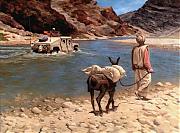The 1st of July 1916 was the bloodiest day in British military history. But there was much more to the Somme than senseless slaughter. The Somme: From Defeat to Victory challenges the traditional view of the battle as a disaster and reveals how it was on the Somme that the British Army learnt to fight a modern war.
Based on extensive research in British and German archives, the film mixes realistic, historically sourced drama scenes, archive, documentary footage and state of the art computer graphics to bring the extraordinary events of the Somme to life. It has been made with the advice of some of the world's top military historians. The result is a film that offers a radical new perspective on the Somme, putting the terrible events of July 1st into their proper historical context.
The film is also influenced by the personal perspective of its writer, director and producer Detlef Siebert, who says:
"As a German, I approached the battle of the Somme without the preconceptions that most British people seem to have. Even 90 years on, the Somme is still seen as a prime example of the recklessness and idiocy of British generals who sent wave after wave of brave young men to certain death.
"And although the battle of the Somme lasted almost 5 months, it is normally only the first day that is remembered. This popular view of the Somme struck me as rather one-dimensional and I wondered how the British Army would have won the war if it was really led by 'donkey' generals. In fact, recent historical research has demonstrated that many British commanders proved able and willing to learn from the disaster of the 1st of July.
"I wanted to make a film that not only shows the human tragedy of trench warfare but also highlights the learning curve of the British Army on the Somme."









Bookmarks